Reimagining Career Day
Guest blogger Valerie Bayes explains how STEM careers can come alive during Career Day!

Imagine your typical career day. Students sit in a classroom all day as a parade of professionals in uniforms and suits stream through the room. Each professional gives their spiel about what they do, sometimes with supporting graphics or props, but for the most part they’re just talking to the students from the front of the room. Sounds riveting, doesn’t it?
Now, imagine trying to connect science, technology, engineering, and mathematics (STEM) as it relates to modern agriculture when tied to talking specifically about the day-to-day. The incredible and interesting part of working in modern agriculture, or any field for that matter, is less about the “career” and more about the daily problem solving involved in that career.
Students learn better when included and engaged. Instead of talking at the students for 30 minutes before taking questions, consider encouraging your professionals to bring real-world problems they are working to solving. This will not only give them an inside glimpse of what the career is really about but also provide context for some of the more abstract concepts generally associated with STEM careers.
For example, consider the entomologist or agronomist. Based on the titles alone, students have already tuned out. Capture their attention and spark their curiosity by having your professional take the students on a journey through a field. Set the crops up as the heroes and their archenemies, a pesky fungus, waiting in the wings for the right time to strike.
Explain to your young learners how and the different variables required for the pest to spread. Walk them through the life-cycle of the fungus, what makes it tick, and how it affects crops. You don’t need a fancy PowerPoint presentation or graphs showing loads of data, just a flip chart and some markers. Present the facts, then let the students’ minds run wild with solutions for this real-world problem.
Split them up in to teams – no one in the business works alone – and ask how they would prevent the spread of this pest. Remember, these are students without all the information. Praise them for their efforts and don’t get bogged down in the details. Have the groups present their best idea and promote discussion around each.
Once you’ve let the kids tackle the issue and heard their solutions, encourage your professional to share some examples of how they’ve solved the same problem through actions or products. But don’t just give the students the answer, walk them through the thought process behind these “professional” solutions, show them the how. Finally, have the professional end their discussion with how problem-solving relates to all careers with professionals in medicine, transportation, agriculture, energy, teaching, etc. following the same steps – learning about the problem, asking questions, and working together to explore different solutions, tossing those that don’t work and digging into those with potential.
At the end of the day, you should be asking your students what problems they want to solve and providing them with real world examples. Don’t worry, a career will fall in to place.
Valerie Bayes serves as Monsanto Company's STEM Engagement Lead headquartered in St. Louis, MO. She aims to rethink the ways private and public partners can work together to increase scientific knowledge and critical thinking skills; not only in the next generation of leaders, but more importantly the master educators who guide them. Valerie can be reached at stemeducation.outreach@monsanto.com.
A Note From The Foundation
Valerie’s wonderful story illustrates how engagement with the Foundation can lead to positive growth in the community. We offer many cooperative engagement opportunities for businesses and organizations of all sizes. We encourage you to learn more about positive growth with the AFBFA.









